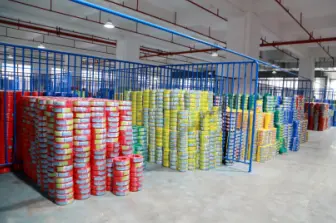How to Identify the Quality of Industrial Control Cable?
The safety of electricity is very important to each of us. If you buy an industrial control cable of poor quality, the quality of the installed circuit cannot be guaranteed, and some accidents are also common. In particular, it is not easy to judge the quality of industrial control cables intuitively. So how do we intuitively identify the quality of industrial control cables?
Ⅰ. Identify the quality of industrial control cables
1) Conductor: The surface of the industrial control cable should be round and smooth, and the coating should be continuous and uniform. The conductor surface should be free from defects such as triangles, burrs, cracks, kinks, folds, inclusions, scars, pits, mechanical damage, corrosion spots, etc. The color is uniform and bright, and there should be no traces of excessive oxidation. The conductor cross-sectional size is sufficient, and it is not a loss.
2) Insulation and sheath: The surface of the industrial control cable should be smooth and round, with uniform luster, and there should be no visible lumps, bubbles, scorch, etc. Insulation (sheath) thickness is uniform, not eccentric. No mechanical damage and flattening. There should be no adhesion between layers of material.
3) Others: The metal shielding layer should be continuous, overlapping and tightly wrapped, without sharp corners, curling, leakage and other phenomena. The cabling pitch is suitable and uniform. The filling is full and the cable is round. The wrapping should be overlapped, and there should be no curling, omission, etc. The appearance of industrial control cables should be round and free from flattening and serpentine bending. There should be no traces of moisture inside the industrial control cable.
Ⅱ. Precautions for burying industrial control cables
1) When the cables cross each other, the high-voltage cable should be under the low-voltage cable. If one of the cables is protected by a pipe or separated by a partition within 1m before and after the intersection, the minimum allowable distance is 0.15m.
2) When the industrial control cable is close to or crossed with the heat pipe, if there are thermal insulation measures, the parallel and cross distances are 0.5m and 0.15m respectively.
3) When the industrial control cable crosses the railway or road, it should be protected by a pipe, and the protection pipe should extend beyond 2m from the track or road surface.
4) The distance between the industrial control cable and the foundation of the building should be able to ensure that the cable is buried outside the building's bulk water. The industrial control cable should be protected by a pipe when it is introduced into the building, and the protection pipe should also extend beyond the building's bulk water.
5) The distance between the industrial control cable directly buried in the ground and the grounding of the general grounding device should be 0.15-0.5m. The buried depth of the cable directly buried in the ground should generally not be less than 0.7m, and should be buried under the permafrost layer.
Latest News & Blog
 English
English  français
français  Deutsch
Deutsch  العربية
العربية  tiếng việt
tiếng việt  ไทย
ไทย  čeština
čeština  Indonesia
Indonesia  Eesti
Eesti  български
български  slovenčina
slovenčina 



